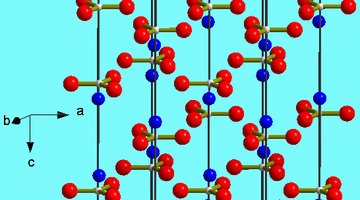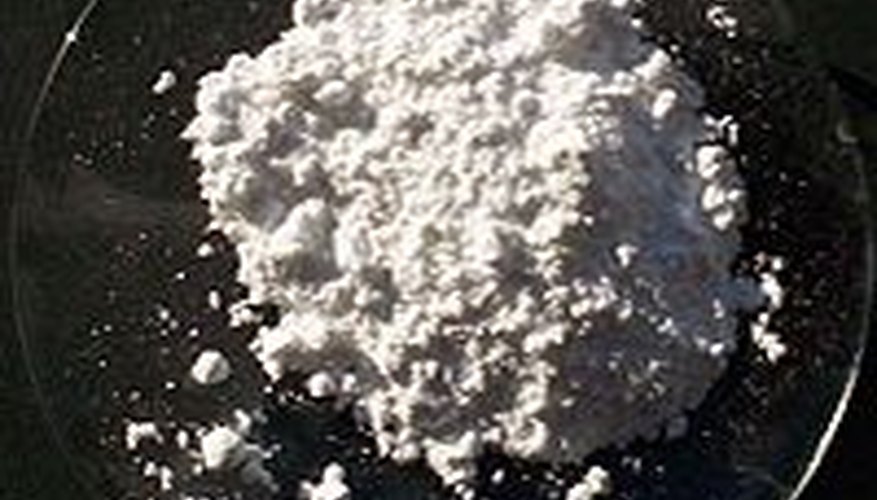Calcium chloride and baking soda react to form calcium carbonate, sodium chloride (salt), water and carbon dioxide. To produce this reaction, calcium chloride and baking soda, which are both solid, are mixed together in water, which provides a solvent for the chemical reaction to occur. The carbon dioxide escapes as a fizzing or bubbling. The calcium carbonate is a white solid precipitate that sinks to the bottom of the water. Calcium carbonate is a base and can be redissolved in an acid, such as vinegar. The balanced chemical reaction is 2 NaHCO3 + CaCl2 => CaCO3 + CO2 + 2 NaCl + H2O.
Exothermic Process
The combination of calcium chloride and baking soda in water also produces heat. Because less energy is required to break the bonds in the NaHCO3 and CaCl2 molecules than is released when the CaCO3, NaCl , CO2 and H2O moledules form, the excess energy becomes heat and the reaction is exothermic. The calcium chloride and baking soda reaction is a popular demonstration in elementary and middle school science classes because of the production of heat and carbon dioxide. Because the chemical reaction is warm and fizzy, it is interesting and safe for kids to observe by watching, listening and touching components of the experiment. When the chemical reaction is done in a beaker or a plastic bag, children can touch the container and feel the heat of the reaction through the glass or plastic.
- The combination of calcium chloride and baking soda in water also produces heat.
- The calcium chloride and baking soda reaction is a popular demonstration in elementary and middle school science classes because of the production of heat and carbon dioxide.
Forms of Calcium Carbonate

Calcium carbonate is produced as a white powdery solid in the reaction, and this is the form of calcium carbonate used by some people as a home remedy antacid. Calcium carbonate also appears in crystallised form in a number of rock structures known as calcite. Limestone is a form of calcium carbonate, which, when it undergoes pressure, becomes marble. Calcium carbonate is also a component of igneous or volcanic rock and is present as the cement in several types of sedimentary stone. Many of the rock formations found in caves are created by tiny particles of calcite stone carried in water and deposited as water flows or evaporates.
- Calcium carbonate is produced as a white powdery solid in the reaction, and this is the form of calcium carbonate used by some people as a home remedy antacid.
- Calcium carbonate is also a component of igneous or volcanic rock and is present as the cement in several types of sedimentary stone.
